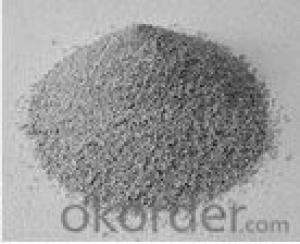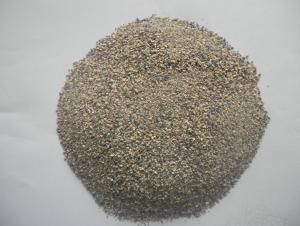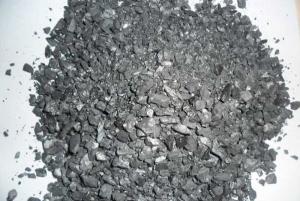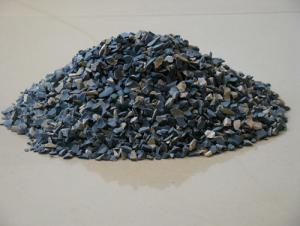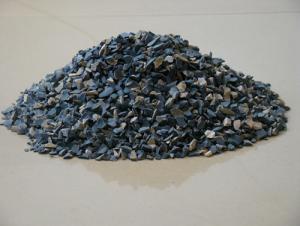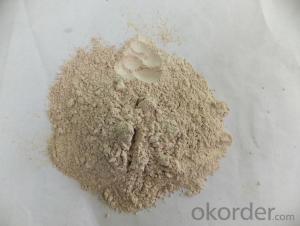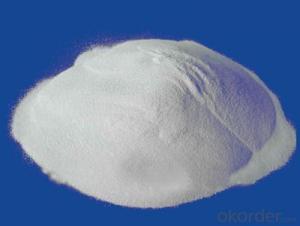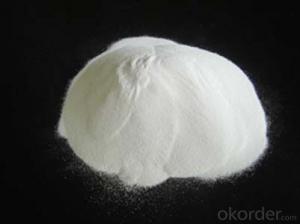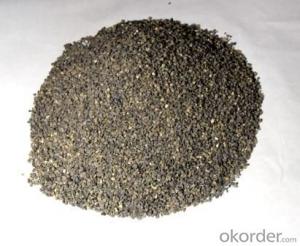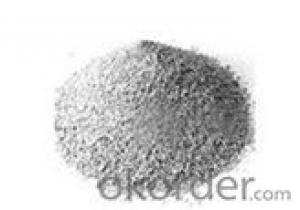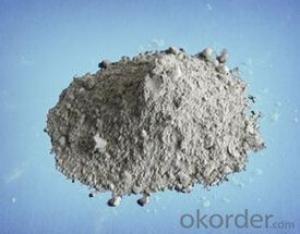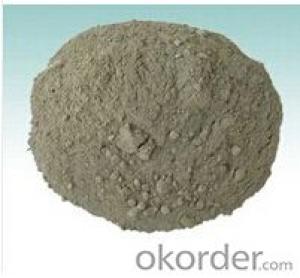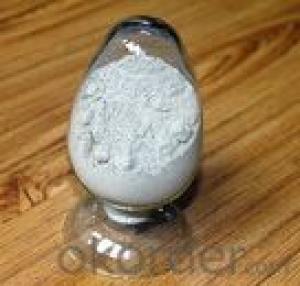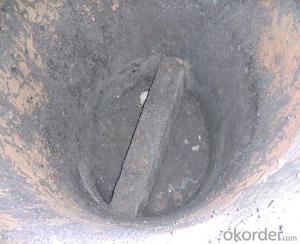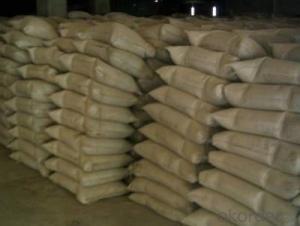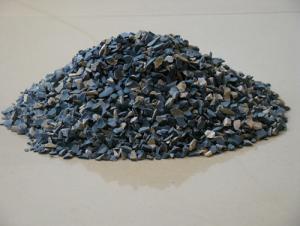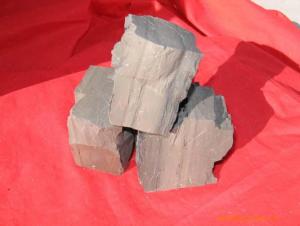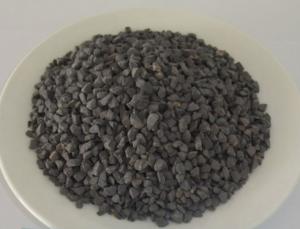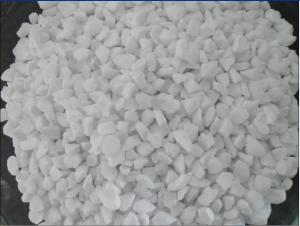Raw Materials for High Alumina Refractory Castable for Blast Furnace
- Loading Port:
- China Main Port
- Payment Terms:
- TT OR LC
- Min Order Qty:
- -
- Supply Capability:
- -
OKorder Service Pledge
OKorder Financial Service
You Might Also Like
Specifications
Refractory Castable
1.AL2O3:26-92%
convenient for construction,
good plasticity,
low expansion
High Alumina Refractory Castable for blast furnace
Refractory castable,High alumina refractory castable,Alumina refractory castable
introduction :
Refractory castable is one of the unshaped refractory materials.It is made of refractory aggregate . refractory powder . binders and other additives. It is loose, No fixed shape,Has high liquidity, Casting and vibration molding,Can use directly or use after add appropriate water or other liquid. It is one of the new type refractory material of don't need calcination. In general the use of the site casting, vibration or tamping pouring molding method, a preform can also be made pre-formed components.
Features:
1. High refractoriness, High refractoriness under load.
2. High density, low porosity.
3. Good slag resistance and corrosion resistance.
4. High strength and wear resistance.
5. Good resistance to flake performance.
6. Good thermal shock stability.
7. Scouring resistance
Main Physical and Chemical Characteristics
item | specification | ||||
| HT-TC1 | HT-TC2 | HT-ZC1 |
| |
Al2O3 ≥ | 75 | 70 | 60 |
| |
SiC%≥ | 10.5 | 9.5 | 30 |
| |
volume density g/cm | 110°C×24h≥ | 2.95 | 2.8 | 2.65 | |
volume density g/cm | 1450°C×24h≥ | 2.9 | 2.75 | 2.6 | |
Resistance strength MPa | 110°C×24h≥ | 30 | 28 | 18 | |
| 1450°C×24h≥ | 45 | 43 | 30 | |
Line rate change %1450°C×24h≥ | +0.5 | +0.8 | +0.5 |
| |
refractoriness≥1790°C | |||||
Application Fields
Industry Served | Application Parts |
Cement industry | 1.preheater (walls /roofs/chutes/cone parts etc.) 2.calciner 3.smoke chamber 4.riser duct 5.rotary kiln(working lining/insulation lining/inlet zone/outlet zone etc.) 6.kiln hood 7.tertiary air duct 8.grate cooler(working lining/insulation lining/parapet etc.) 9.burner lance/rotary kiln burner |
Metallurgy | Furnace linning |
Generation Plant | Boiler |
Steel Industry | Steel ladle/tundish |
Environmental protection industry | Waste Incinerator etc. |
FACTORY:
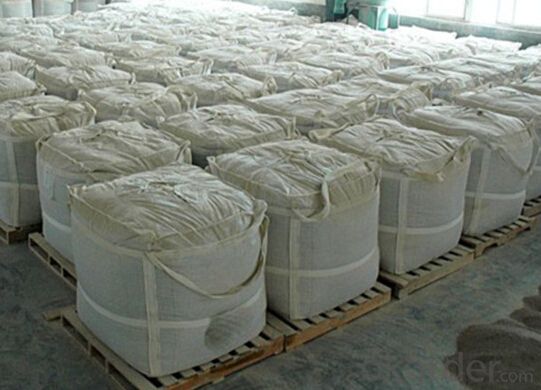
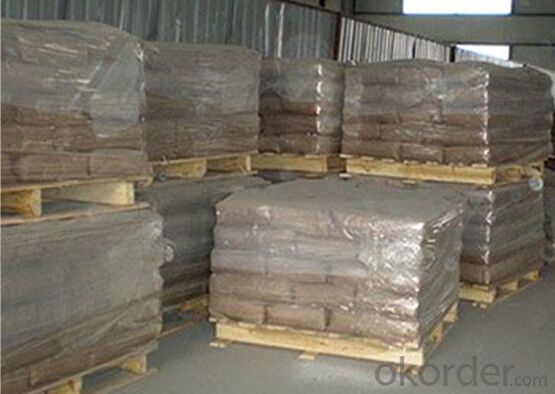
- Q: What problems should be paid attention to while using refractory materials under a controlled atmosphere?
- Pay attention to the performance of the materials, and the use of non oxide materials!
- Q: What's the fireproof specification for constrcution external wall thermal insulation materials?
- incombustible material: Class A1 (homogenous): such as YT inorganic active insulation material for wall thermal, foam glass, rock(ORE) wool, glass wool, insulation?board of aerogel,expanded perlite series, expaned glazed hollow bead, foam insulation boards, ETC. Class A2 (non-homogeneous composite): such as phenolic foam, gelatine powder polyphenyl granule thermal insulation material, inorganic coating materials and other nonflammable material. phenolic foam insulation board, urea resin foam and board, high flame-retardant polyurethane rigid foam and board, high flame retardant polystyrene cystosepiment, gelatine powder polyphenyl granule heat insulating slurry and other combustible?materials. Requirements for combustion levels of common antiflaming EPS, common inflaming retarding XPS, common antiflaming rigid PU foam board: Class A is incombustible?material (product); B1 nonflammable material (product); B2 combustible?material (product); B3 combustible material (product).
- Q: Does the production of refractory belong to advanced technology?
- Refractories production is advanced technology supported by the state. The refractory enterprise is high-tech enterprises and it needs to apply for it in science and technology bureau.
- Q: How many refractory materials does the annual output of 1 million tons of coke oven require?
- Refractory materials are expensive, and any refractory accident will lead to a considerable waste of production time and equipment, and sometimes even the product itself. The type of refractory material will also affect energy consumption and product quality. Therefore, it is very important to select the refractory material which is most suitable for various applications. While the economic benefits have great influence, refractory material most suitable for some applications need not be used for materials, but can achieve a balance between material installation cost and performance, this balance is not fixed, but with the introduction of new technology or new refractory materials and changing. History has proved that unremittingly seek metallurgical process more reasonable and development, greatly promoted the development of refractories, quickly resolve these problems has become the modern refractory steel technology development is an important element. The content of this article is to discuss a number of factors including these issues and to provide information on how to solve them.
- Q: What is the material composition of the new fire-resistant coating?
- New fire-resistant coating generally consists of base material, dispersion media, flame retardants, fillers, additives (plasticizers, stabilizers, waterproofing agents, moisture, etc.). (1) Base material is the basis of the composition of the coating, and it is the main film-forming substance, playing a decisive role in coating performance . For fire-resistant coating, its base material must be capable of matching with the flame retardant to constitute an organic fireproofing system. The base material commonly employed at home and abroad includes inorganic and organic film-forming material. Inorganic film-forming materials include silicate. Si03, K2 Si03Na2 Si03), silica and phosphate [Al. (HPO.). ] ect. There are a wide range of organic film-forming substance, usually flame retardent organic synthetic resins, such as phenolic resins, halogenated alkyd resins, polyester, halogenated olefin resins (such as vinyl chloride resin), amino resin (melamine resin, urea resin, etc. ), tar-based resins, furan resins, heterocyclic resins (e.g., polyamide-imide, polyimide, etc.), organic elements resins (e.g. silicone resin), rubber (halogenated rubber such as chlorinated natural rubber) and so on. There are numerous latex taking water as solvent. www.hc3600.
- Q: What are fireproofing materials?
- Plants often use the fireproof sealing material with steel structures without much modification. All the panels that meet the first-order fire protection requirements can be fireproofing materials. Like gypsum boards, aluminum sheets and so on. . Coatings are usually those with fine powder, high density and good sealing. Hardeners mainly depends on specific requirements. .
- Q: What are the chemical composition of refractory cement?
- Calcium aluminate prepared by calcining as the main component. Aluminate cement takes bauxite and limestone as raw materials, alumina content of about 50% as the clinker. And it is a hydraulic cementing material made by grinding. Refractory cement is also known as aluminate cement.
- Q: What is high alumina refractory?
- High alumina refractory: High alumina refractory products, with high refractoriness, compressive strength and refractoriness under load, it is used for masonry of a variety of large-scale blast furnaces such as steel furnace, air heating furnace and electric furnace, and for high-temperature parts of thermal equipment like rotary?kilns.
- Q: Could you tell me how does fire protection standard of decorative material is divided?
- Divided by plate material: structure material, base layel materials and fabric; Divided by fire protecrtion type: easy to burn, difficult to burn, flame retardant, incombustible material. Material has no fire rating, only the different from the time of combustion limit. Building fire protection. Building fire protection is the fire prevention measures of buildings. In the architectural design, fire protection measures should be taken to prevent fires and reduce fire hazards to life and property. Building fire prevention measures includs prophylaxis before the fire and measures during the fires. The former is mainly to determine the fire resistance rating and fire-proof structure, control fuel quantity and space easy to fire site; The latter mainly for fire partition, setting of evacuation and smoke, fire-fighting equipment, etc. In ancient China, flammable wood are usually taken as a building material, which has accumulated many experiences for the building fire protection .
- Q: What needs to be paid attention to in the construction of high- temperature refractory mortar?
- 1. During the use of high- temperature refractory mortar, the minimum mortar joint should be 0.5mm and general mortar joint should be 3-5mm, which can solve the processing and fine grinding of refractory brick on the brick grinder. Besides, it is conducive to the health of workers, and can reduce the masonry effort, ensure the quality and speed up the construction progress. 2. When making urgent repair on the stove, if the joint is much too large, 2-3mm refractory pieces can be appropriately added into the high- temperature refractory mortar, and stirred to fill the joint so as to shorten the repair time and ensure normal production. 3. High- temperature refractory mortar can be painted inside various furnace body, and it should be guaranteed that the surface of the furnace body has no dust or debris before painting.
Send your message to us
Raw Materials for High Alumina Refractory Castable for Blast Furnace
- Loading Port:
- China Main Port
- Payment Terms:
- TT OR LC
- Min Order Qty:
- -
- Supply Capability:
- -
OKorder Service Pledge
OKorder Financial Service
Similar products
Hot products
Hot Searches
Related keywords
